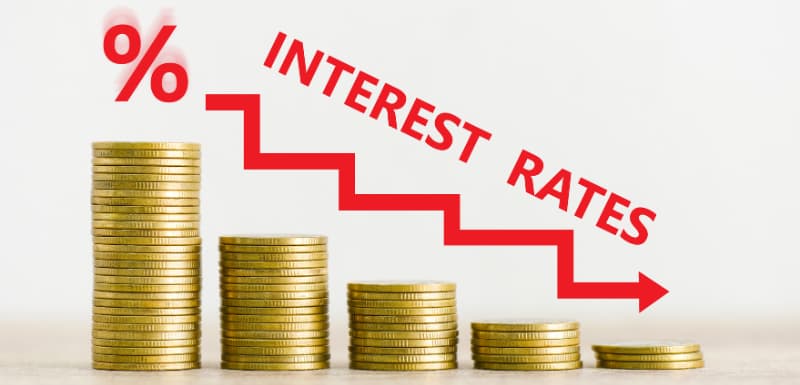How to Manage Investment Risk Efficiently

“The biggest risk is not taking any risk” is a famous quote by Mark Zuckerberg. The same applies to the investing world also. Some investors play safe and invest all their savings in low-risk options like bank fixed deposits, Government securities, etc. But, after factoring in taxation, the returns may not even be able to beat inflation. So, you run the risk of negative returns. Hence, it is recommended that you take risk by investing in equity mutual funds and mitigate/manage the risks using various risk management strategies. In this article, we will understand how to manage investment risk in mutual funds using various strategies.
Understanding the Basics of Investment Risks
Risk generally means the outcome is different from what was expected. In investing, risk usually refers to lower returns than expected, a partial or complete loss of the investment amount. In investing, an individual will come across various risks, some of which include the following.
- Market risk, also known as systematic risk, refers to an investor suffering losses due to factors affecting the entire market. These factors are beyond the control of the individual investor.
- Liquidity risk refers to an investor being unable to sell the shares/mutual fund units due to no buyers or selling them at lower than market price due to a lack of buyers.
- Concentration risk refers to having shares of fewer companies in the portfolio than required or desired. It can also mean an investor is exposed to limited asset classes, sector(s) or theme(s). Concentration is the opposite of diversification. An investor should always have a diversified investment portfolio.
- The interest rate risk refers to market interest rates moving higher. Higher interest rates increase the interest payment burden for listed companies, leading to lower profits. Lower profits can lead to lower share prices. Thus, high interest rates are not good for the overall stock markets.
- Credit risk refers to a borrower defaulting on the repayment of principal and/or interest. Fixed-income investors are exposed to credit risk. If a listed company is not able to meet its debt obligations, it can lead to the share price falling.
We have seen the above risks that investors are exposed to. While avoiding all risks may not be possible, an investor can always have investment risk control by taking various measures.
Investment Risk Control Strategies
If you are a long-term investor, investment and risk management should go hand in hand. Let us look at some strategies to manage investment risk in mutual funds.
Follow a Goal-Based Investing Approach
In the investment world, greed and fear emotions are an investor’s two biggest enemies. These two emotions risk the investor missing their financial goals. During bull runs, some investors get greedy and invest more money into higher-risk products to make short-term gains. Some investors do the opposite by redeeming investments to book profit, hoping they will reinvest later at lower levels. Either way, most of them get it wrong. The best strategy is to stay calm and continue with your SIPs.
Similarly, during bear markets, some investors panic and sell. Some of them end up selling at rock-bottom prices and incur losses. Here, again, investors should stay calm and continue with their SIPs.
When investors follow a goal-based investing approach, they can keep their greed and fear emotions aside and stay focused on achieving their financial goals. It helps overcome emotions, navigate market volatility related short term risks, and increases the probability of achieving financial goals in the long term.
Asset Allocation
Once you adopt a goal-based investing approach, the next step to managing investment risks is to follow appropriate asset allocation. While equities can create wealth for you in the long run, in the short term, different asset classes take turns to outperform each other year after year.
Hence, you should diversify your investment portfolio among asset classes such as equity mutual funds, fixed income, gold, etc. Equity can be for growth, fixed income for stability, and gold is a hedge against inflation and a safe haven during uncertainty.
For long-term financial goals, major allocation can be made to equity mutual funds, with some allocation to fixed income and gold. Within equity, you should further diversify into large, mid, small, and flexi-cap mutual fund schemes. With appropriate asset allocation, you can balance investment risks and earn better risk-adjusted returns.
Equity Risk Reduces in the Long Term
You should invest in equity mutual funds for long-term financial goals where the investment time horizon is more than five years. While equities are volatile and vulnerable to falls in the short term, as the investment time horizon increases, the volatility evens out.
When the investment time horizon is seven years or higher, the probability of negative returns falls to almost nil inspite of small to big market corrections on the way. Thus, you can overcome short-term volatility and market risks by investing for the long term.
Invest Through SIP Instead of Lumpsum
For investing in equity mutual funds, it is recommended that you invest through the systematic investment plan (SIP) route rather than lumpsum. With SIP investments, you benefit from the Rupee Cost Averaging (RCA). With every SIP instalment, your purchase price gets averaged. Thus, SIPs help you overcome market risks related to volatility and corrections in the short term.
Work With an Investment Expert Instead of the DIY Approach
One of the biggest risks some investors take is they follow the Do It Yourself (DIY) approach. Some investors go for direct plans to save on the expense ratio. The risk of choosing the wrong mutual fund scheme can lead to higher losses than the lower expense ratio savings from a direct mutual fund.
Hence, you should work with an investment expert. These are qualified and experienced individuals who can help you not just with mutual fund scheme selection but also guide you at every stage of financial planning. They can handhold you throughout your financial planning journey till you achieve your financial goals.
Regular Review and Portfolio Rebalancing
The last step to control investment risks is to review your investment portfolio regularly. You should sit with an investment expert once every six months to a year and review your entire investment portfolio. If some mutual fund scheme is consistently underperforming than expectations, the investment expert can recommend an appropriate replacement.
During the review, you should also rebalance your portfolio to revert to the base asset allocation. For example, if equity markets have gone up sharply, the equity portfolio will increase significantly. In such a scenario, you may redeem some equity scheme units and invest the proceeds in a fixed-income scheme to revert to the base asset allocation.
Risk is an integral Part of Investments
Most financial products carry risk. However, the degree of risk may vary among different financial products. While risk cannot be avoided entirely, it can be managed. To earn good returns, you have to take risks. However, at the same time, you can apply risk management strategies to reduce risk and earn better risk-adjusted returns. Hence, you should make stock market volatility and short-term corrections your friend and take them in your stride in your long-term financial planning journey.
FAQs
While SIP in Mutual Funds Can Reduce the Risk, What if someone receives a Lumpsum Amount?
The principle of averaging your investments is key to reducing risk of investing in equity. A staggered approach like an SIP does exactly that. Similarly, a staggered approach called an STP or a Systematic Investment Plan works best for lumpsum investments. If you have received a lumpsum amount, park it in a debt or an arbitrgage fund (low risk funds). Use the systematic transfer plan (STP) to invest at regular intervals (weekly, monthly, quarterly) in an equity fund. The debt or Arbitrage scheme will be the source scheme, and the equity scheme will be the target scheme.
How Should One Choose Mutual Fund Schemes ?
Some investors select mutual funds based on their past performance like returns in the last 1-3 years. Data shows that most table-topper mutual fund schemes are unable to consistently repeat their outperformance. Infact, some table-topper schemes find themselves at the bottom in the next year’s performance table.
While choosing mutual fund schemes for investment, look at the consistency of returns rather than returns in the last 1-3 years. The most important way to choose a Mutual Fund scheme is by understanding your goal tenor and the risk you are willing to take while investing, While small or mid cap funds could be more volatile in the short term, they could be an ideal investment for a long term goal which is more than 5 years away. It is best to take help from an investment expert who would create a personalised investment plan and recommend funds based on your goals, risk tolerance and investing expectations.
Your Investing Experts
Relevant Articles
Alternative Investments Are Booming: Be Aware of the Risks Before Investing
In the last few years, some fintechs have brought alternative investments within the reach of retail investors. Earlier, these opportunities were limited to specific investors like corporates, HNIs, family offices, etc. As alternative investments are accessible to retail investors, they have become popular in the last few years, and continue to grow at a fast pace. Before taking the plunge into alternative investments, retail investors should weigh the risks and rewards properly. So, what are some of the alternative investments available, and the risks that they carry?
Interest Rates May Go Down: Should You Lock Into High FD Rates or Invest in Duration Debt Funds?
In the last few monetary policy meetings, the Reserve Bank of India (RBI) and the US Fed have maintained a status quo on interest rates. Throughout most of 2022-23, most central banks increased interest rates to combat high inflation.
Ten Important Features Of Your Health Insurance Policy
Health insurance isn’t just a safety net—it’s a necessity! From pre-existing conditions and waiting periods to claim settlement ratios and sub-limits, knowing your policy inside out can save you from unexpected financial burdens. Choose wisely and ensure your coverage meets your family’s needs!
.png)
.png)

